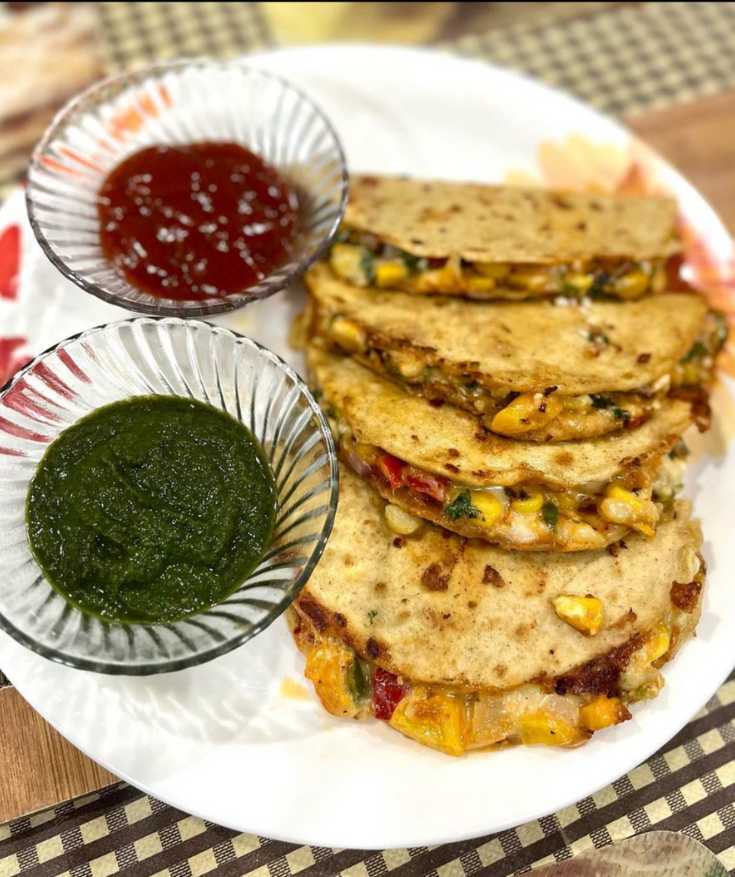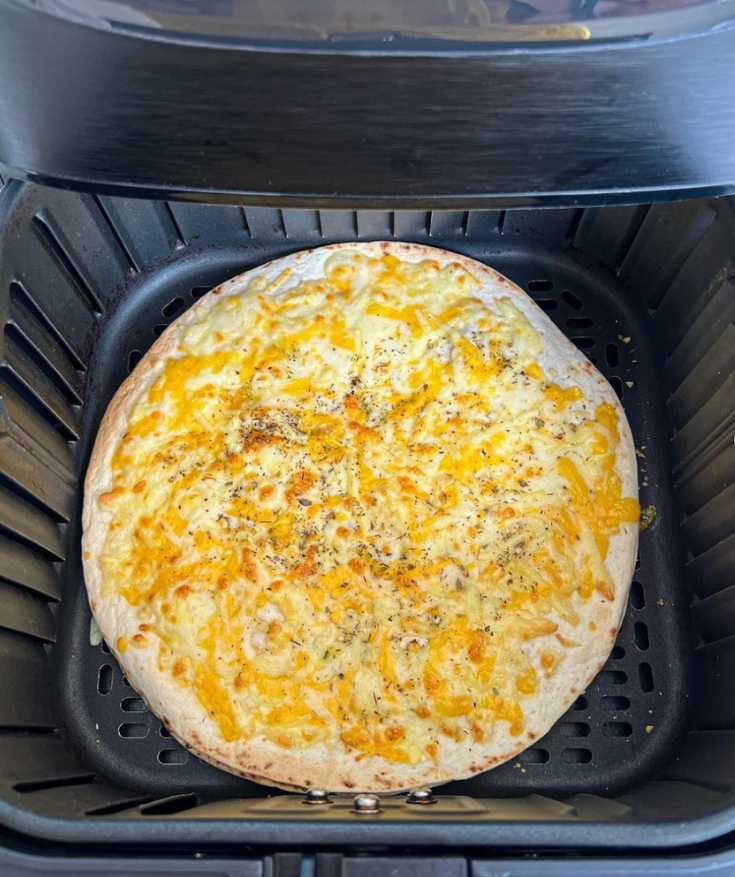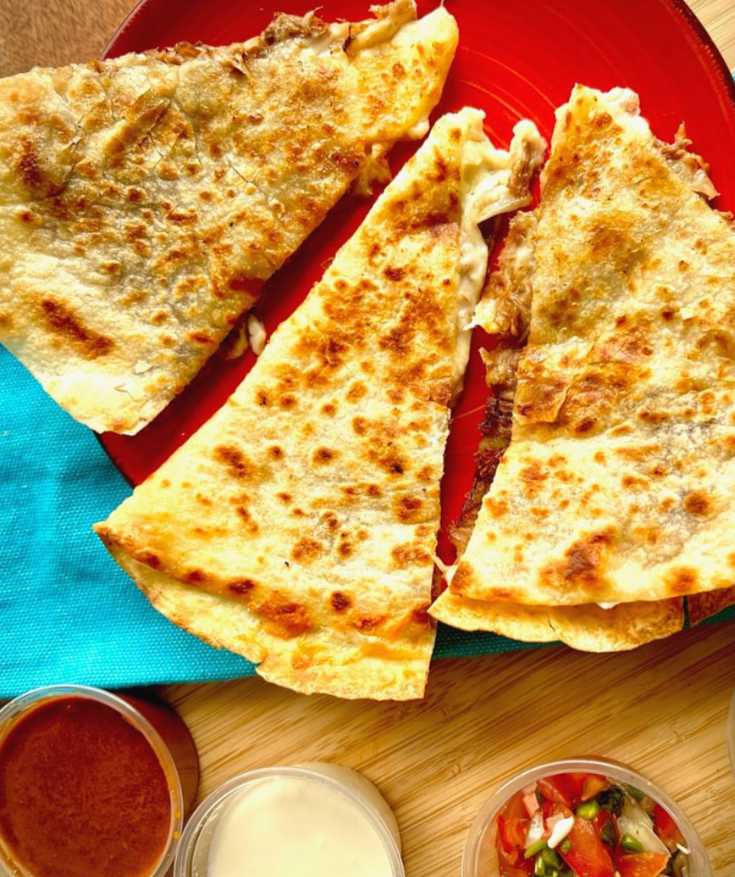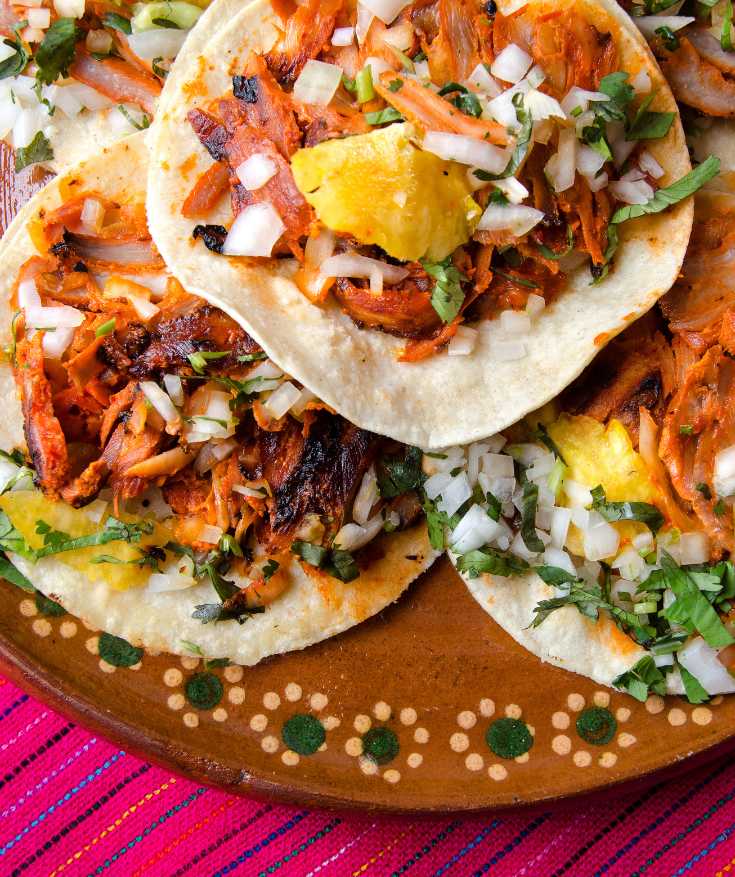Mexican Food > Quesadilla
Quesadilla is a beloved staple of Mexican cuisine that has spread to kitchens worldwide. But what is a quesadilla? Put simply, it’s a Mexican-style grilled cheese sandwich.
It starts with two tortillas and layers of cheese, often Monterey Jack or Oaxaca, in between. The quesadilla is then cooked in a skillet on the stovetop until the cheese melts and the tortillas become golden and crisp.
Some versions add fillings like chorizo sausage, beans, vegetables, or even fruit! Quesadillas can be served as an appetizer or main course, depending on how generous you are with the fillings.
They’re also great for kids – let them pick their favorite ingredients like olives, mushrooms, or shrimp for an extra fun twist on this classic dish!
History of Quesadilla
Quesadillas originated from Mexico and have been a part of traditional Mexican cuisine for centuries, and can be found throughout Latin America today. Although this dish has grown in popularity around the globe, its history is still steeped in tradition.
The story of quesadillas begins with the Aztecs of central Mexico, who used to make corn tortillas filled with vegetables and cheese called tlaxcalli. This original version was relatively simple compared to what we eat today but laid the foundation for what would eventually become modern quesadilla recipes.
How to make Quesadilla
Making your own guacamole is easy. Start by mashing the avocado in a bowl until it’s nice and creamy. Then add chopped tomatoes, onions, cilantro, garlic powder, and lime juice for an extra kick of flavor. Mix everything until it’s evenly combined – and voila!
Quesadillas FAQ
Still have questions about quesadilla?
If you cannot find an answer to your question in our FAQ, leave your question in the comment box below, and we’d be happy to update this post. Follow our social media channels, where we answer questions without a cost!









